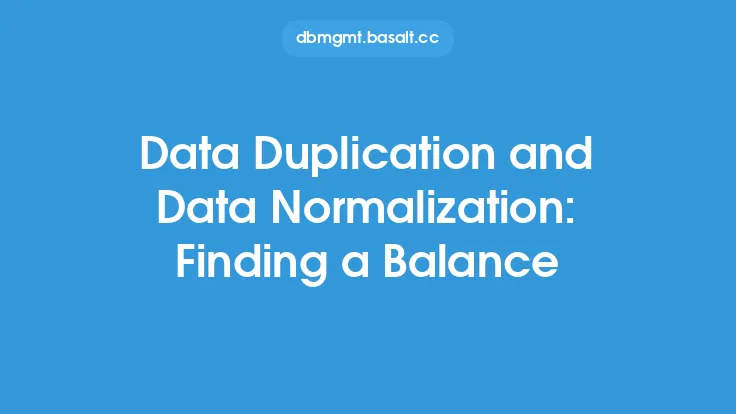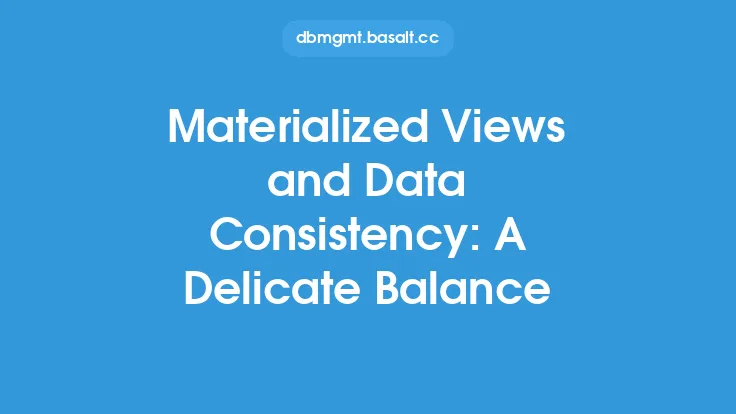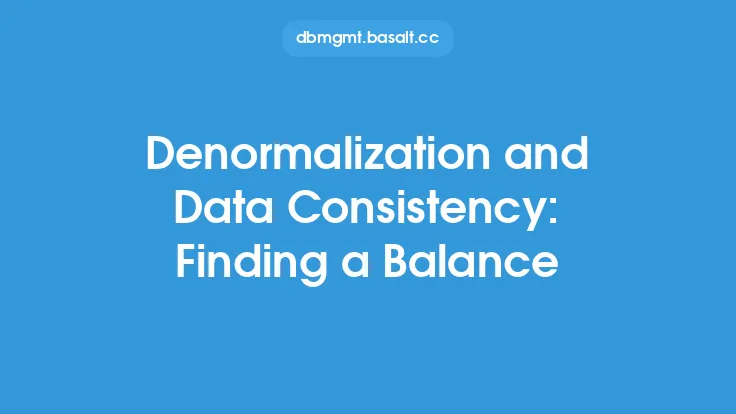When it comes to managing and analyzing large datasets, summary tables play a crucial role in providing a condensed and organized view of the data. However, maintaining the integrity of the data in these summary tables is a delicate balance that requires careful consideration. In this article, we will explore the importance of data integrity in summary tables and discuss the various factors that can impact it.
Introduction to Data Integrity
Data integrity refers to the accuracy, completeness, and consistency of data within a database or summary table. It is essential to ensure that the data is reliable and trustworthy, as it is used to make informed decisions and drive business outcomes. In the context of summary tables, data integrity is critical because it directly affects the accuracy of the summarized data and the insights that can be gleaned from it.
Factors Affecting Data Integrity in Summary Tables
There are several factors that can impact data integrity in summary tables, including data quality, data consistency, and data freshness. Data quality refers to the accuracy and completeness of the data, while data consistency refers to the uniformity of the data across different tables and databases. Data freshness, on the other hand, refers to how up-to-date the data is. If the data is not regularly updated, it can become stale and lose its relevance.
Data Quality and Summary Tables
Data quality is a critical factor in maintaining data integrity in summary tables. Poor data quality can lead to inaccurate or incomplete data, which can in turn affect the accuracy of the summarized data. Common data quality issues include duplicate or redundant data, inconsistent data formatting, and missing or null values. To ensure high data quality, it is essential to implement data validation and cleansing processes that detect and correct errors before the data is summarized.
Data Consistency and Summary Tables
Data consistency is another important factor in maintaining data integrity in summary tables. Inconsistent data can lead to confusion and errors, particularly when dealing with large datasets. To ensure data consistency, it is essential to establish clear data standards and formatting guidelines that are applied uniformly across all tables and databases. This includes using standardized data types, formats, and naming conventions.
Data Freshness and Summary Tables
Data freshness is also critical in maintaining data integrity in summary tables. Stale data can lead to inaccurate insights and decisions, particularly in fast-paced and dynamic environments. To ensure data freshness, it is essential to implement regular data updates and refreshes that reflect the latest changes and trends. This can be achieved through automated data pipelines, real-time data feeds, or manual data updates.
Best Practices for Maintaining Data Integrity
To maintain data integrity in summary tables, several best practices can be applied. These include implementing data validation and cleansing processes, establishing clear data standards and formatting guidelines, and ensuring regular data updates and refreshes. Additionally, it is essential to monitor data quality and consistency regularly and address any issues promptly. By following these best practices, organizations can ensure that their summary tables provide accurate and reliable insights that drive informed decisions.
Conclusion
In conclusion, maintaining data integrity in summary tables is a delicate balance that requires careful consideration of several factors, including data quality, data consistency, and data freshness. By implementing best practices such as data validation, data standardization, and regular data updates, organizations can ensure that their summary tables provide accurate and reliable insights that drive informed decisions. As data continues to play an increasingly important role in business decision-making, the importance of data integrity in summary tables will only continue to grow.





